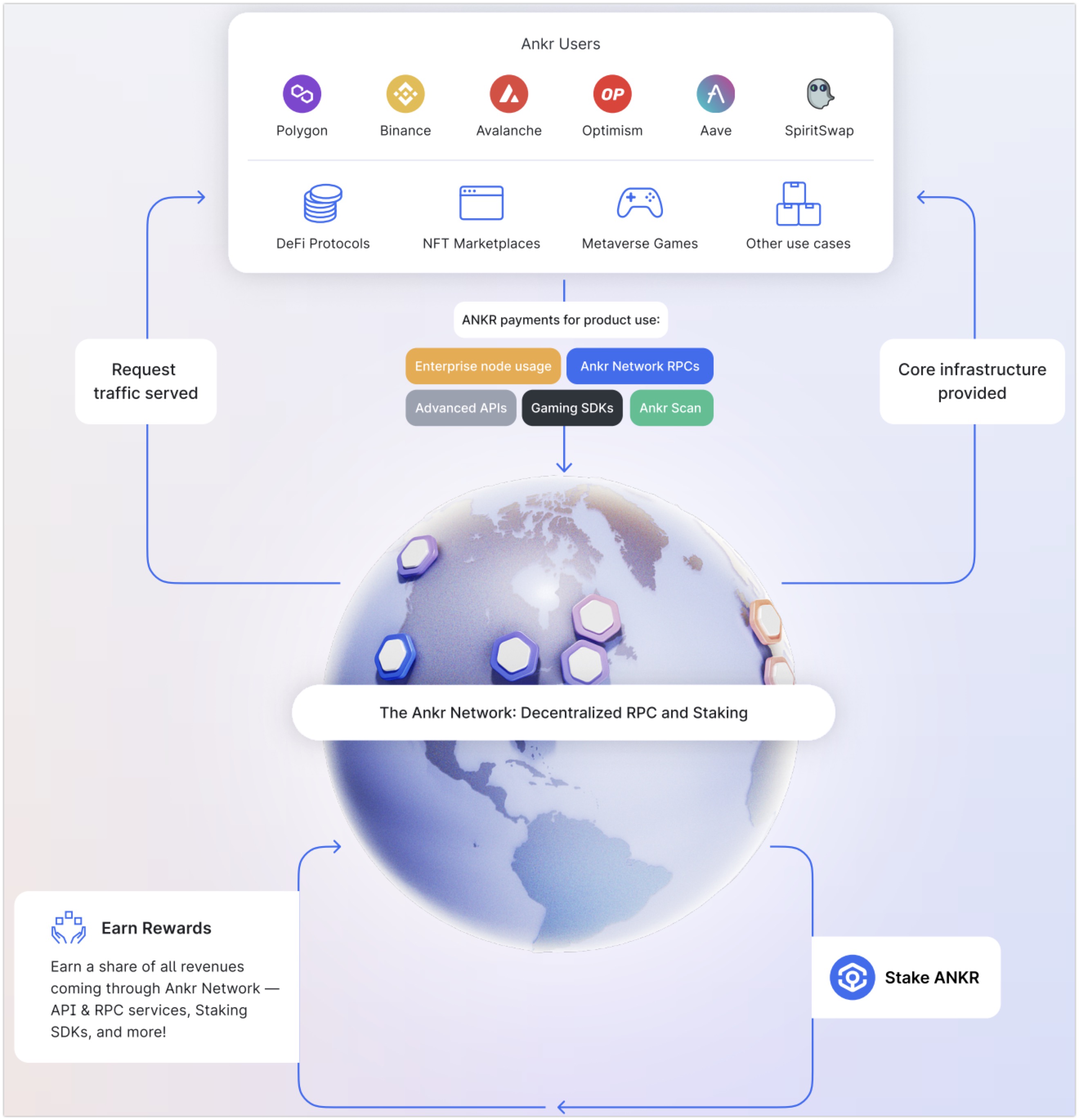Delegated ANKR token staking
Introduction
In the Ankr 2.0 whitepaper, we introduced the vision for Ankr Network as a decentralized system where independent node operators work alongside Ankr nodes to power the growth and development of Web3, with a subsidy from the additional services and features provided to developers by Ankr ecosystem contributors and partners.
The first step to making this vision a reality is the introduction of a market mechanism (staking) that will bring developers, node providers and Ankr ecosystem supporters together to solidify the foundational building blocks of Ankr Network’s decentralized node marketplace. Afterall, to build a truly decentralized Web3 protocol, “tokens must be more valuable to network participants than they are to purely financial holders.”

Our product team is releasing a reimagined vision of Ankr Network – our global network of nodes running on 18+ different blockchains. This vision for Ankr Network 2.0 brings together our ecosystem of developers, node providers (Node Pros), and stakers (Ankr Bankrs) in a way that will offer everyone involved with Ankr a more rewarding experience — with ANKR token utility at its very heart.
Audit details
ANKR token staking smart contracts have undergone an external audit by Beosin Blockchain Security:
What is ANKR token staking?
ANKR token staking is similar to the idea of staking to help secure PoS networks. However, instead of delegating ANKR to validator nodes, ANKR token staking introduces the ability for anyone to stake to full nodes for the first time ever. Now, anyone can earn ANKR rewards and become an “Ankr Bankr” by staking their tokens with the independent full nodes running on our new decentralized Network.
Why is ANKR token staking needed?
The Ankr Network depends on reliable, high-quality node providers to serve RPC requests on supported blockchains. As such, the system requires a significant deposit of ANKR backing each node provider. This includes ANKR deposits each node provider contributes (the self-stake).
In addition, token holders will have the ability to signal support for individual node providers on the Ankr Network by staking ANKR to back their nodes. By delegating ANKR to node providers, community members play an active role in discerning which service providers are reputable, performant, and worthy of a reputational boost. In return, ANKR token stakers share in the rewards earned by the node providers they support. ANKR staking will also enable delegators to allocate voting power to node providers to decide, among other things, which independent node providers will be admitted in the near term to service traffic on Ankr Network.
Although the ANKR staking pool may eventually be capped in size, offering allotments to existing node providers, community members, and other active Ankr ecosystem members, the initial ANKR staking pool will not be capped in size, and we anticipate that the pool size will be expanded. This may cause the APY for the V1 of ANKR staking to be variable.
The benefits of staking ANKR
- Experience a new kind of staking
For the first time, you can stake your tokens to full nodes (serving the development layer) instead of validator nodes (serving the consensus layer). - Earn ANKR for enabling Web3 development
Stakers help node providers operate on Ankr Network so they can serve the Web3 developers and applications depending on them for blockchain access. - Boost Web3 integration and adoption
Become part of a Network that provides developers faster and more reliable connections to blockchains so their decentralized applications can work more efficiently. - Own & govern a foundational layer of Web3
Those who stake ANKR can participate in the Ankr DAO to make critical decisions affecting the Network's future.
What is next with ANKR token staking?
As Ankr continues to release more and more infrastructure solutions powered by Ankr Network, we will have a growing need for Ankr Bankrs to help secure the system. And as Web3 grows and we add an ever-increasing number of chains to the protocol, Ankr will match the pace of Web3 adoption.